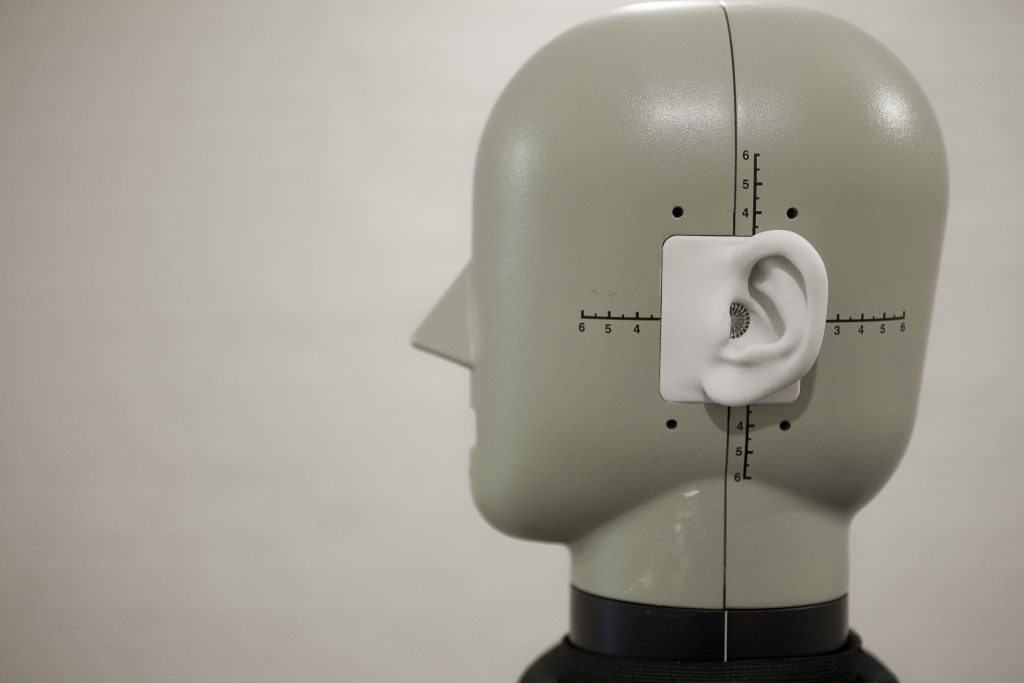Washing machine sounds
Below are some examples of five different washing machine sounds, both monaural and binaural recordings have been made. The washing machine was recorded in a room which was a typical size for a kitchen. The room was very reverberant, so absorbing materials were added to make it sound closer to a real kitchen. This was done using acoustic absorbent material. The product was placed in the middle of a wall, far from the corners. It was placed under a worktop and between two side boards to represent the typical set up of a kitchen. The washing machine was placed on a solid concrete floor and did not touch the worktop, the wall or the side boards to prevent structureborne sound. The background noise level of the room was low.
The wash load consisted of cotton at a weight close to but in any case not more than the rated capacity. A 60 deg C cotton program was used without pre-wash. Special options (extra rinse etc) were switched off. Detergent was used.
Monaural
The monaural recordings were made with a half inch diaphragm microphone placed at a distance of 1m and a height of 1.5m from the washing machine, this was considered to be the position of a typical listeners ear.
- Download zip file of monaural sounds (3Mb)
Binaural
The binaural recordings were made with a B&K 4100 dummy head placed at a distance of 1m and a height of 1.5m from the washing machine, this was considered to be the position of a typical listeners ear.
- Download zip file of binaural sounds (13Mb)
- Download excel spreadsheet of subjective results
- Download excel spreadsheet of objective results
